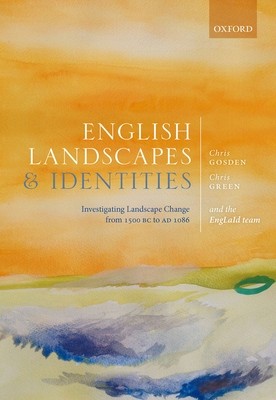
- We will send in 10–14 business days.
- Author: Chris Gosden
- Publisher: Oxford University Press, USA
- ISBN-10: 0198870620
- ISBN-13: 9780198870623
- Format: 17.5 x 24.6 x 3.1 cm, hardcover
- Language: English
- SAVE -10% with code: EXTRA
Reviews
Description
Long before the Norman Conquest of 1066, England saw periods of profound change that transformed the landscape and the identities of those who occupied it. The Bronze and Iron Ages saw the introduction of now-familiar animals and plants, such as sheep, horses, wheat, and oats, as well as new
forms of production and exchange and the first laying out of substantial fields and trackways, which continued into the earliest Romano-British landscapes. The Anglo-Saxon period saw the creation of new villages based around church and manor, with ridge and furrow cultivation strips still preserved
today.
looks at the nature of archaeological work undertaken across England to assess its strengths and weaknesses when writing long-term histories. Among many other topics it examines the interaction of ecology and human action in shaping the landscape; issues of movement across the landscape in various
periods; changing forms of food over time; an understanding of spatial scale; and questions of enclosing and naming the landscape, culminating in a discussion of the links between landscape and identity. The result is the first comprehensive account of the English landscape over a crucial 2500-year
period. It also offers a celebration of many centuries of archaeological work, especially the intensive large-scale investigations that have taken place since the 1960s and transformed our understanding of England's past.
EXTRA 10 % discount with code: EXTRA
The promotion ends in 20d.13:19:15
The discount code is valid when purchasing from 10 €. Discounts do not stack.
- Author: Chris Gosden
- Publisher: Oxford University Press, USA
- ISBN-10: 0198870620
- ISBN-13: 9780198870623
- Format: 17.5 x 24.6 x 3.1 cm, hardcover
- Language: English English
Long before the Norman Conquest of 1066, England saw periods of profound change that transformed the landscape and the identities of those who occupied it. The Bronze and Iron Ages saw the introduction of now-familiar animals and plants, such as sheep, horses, wheat, and oats, as well as new
forms of production and exchange and the first laying out of substantial fields and trackways, which continued into the earliest Romano-British landscapes. The Anglo-Saxon period saw the creation of new villages based around church and manor, with ridge and furrow cultivation strips still preserved
today.
looks at the nature of archaeological work undertaken across England to assess its strengths and weaknesses when writing long-term histories. Among many other topics it examines the interaction of ecology and human action in shaping the landscape; issues of movement across the landscape in various
periods; changing forms of food over time; an understanding of spatial scale; and questions of enclosing and naming the landscape, culminating in a discussion of the links between landscape and identity. The result is the first comprehensive account of the English landscape over a crucial 2500-year
period. It also offers a celebration of many centuries of archaeological work, especially the intensive large-scale investigations that have taken place since the 1960s and transformed our understanding of England's past.


Reviews